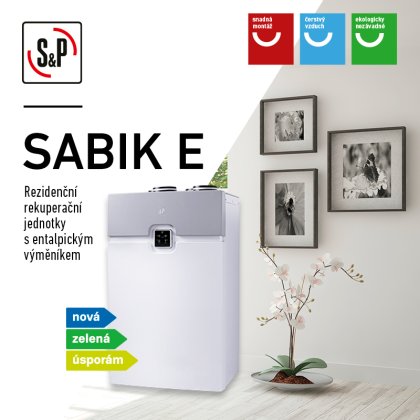These new units contain an entalpic exchanger, in which not only heat energy (temperature) is transferred, but also moisture is transferred. In rooms where a set level of relative humidity needs to be maintained, enthalpy exchangers are the ideal solution.
- In summer, it keeps excess humidity out of the house.
- In winter, it prevents excessive drying of the interior of the house and keeps it within the recommended humidity range.
For more information, see the updated datasheets available on our website. The manuals have been updated and are also available on the website. SABIK E units are now available on EasyVent, where you can design a heat recovery unit. CAD and BIM models can also be downloaded in EasyVent.
For more information, please do not hesitate to contact us.
YouTube links
SABIK heat recovery ventilation units - modular concept
SABIK heat recovery ventilation units - duct connection option
SABIK E ventilation units with heat recovery - enthalpy exchanger
Function of an enthalpy exchanger
A board enthalpy exchanger for moisture transfer is an exchanger made of a material that passes water vapor from the wetter exhaust air to the drier fresh supply air. The higher the specific humidity ratio in the exhaust air from the ventilated space, the higher the moisture transfer efficiency. The special material of the enthalpy exchanger partition only allows the transfer of water vapour molecules. Other substances such as air, vapours, bacteria cannot pass through the splitting wall. As the moisture transfer efficiency increases, the amount of condensate formed on the waste side is eliminated. As a result of this phenomenon, there is no massive freezing of condensed water on the waste side of the heat exchanger during the winter months.


